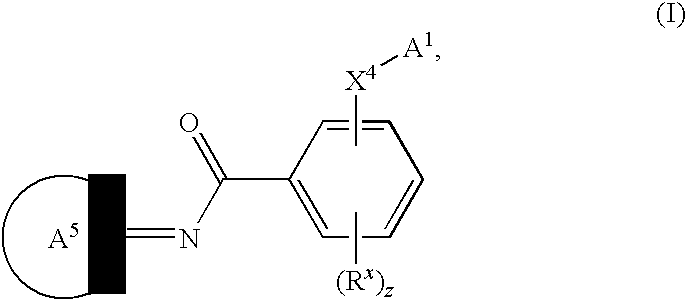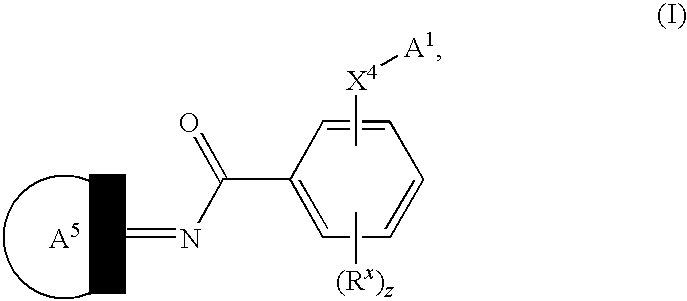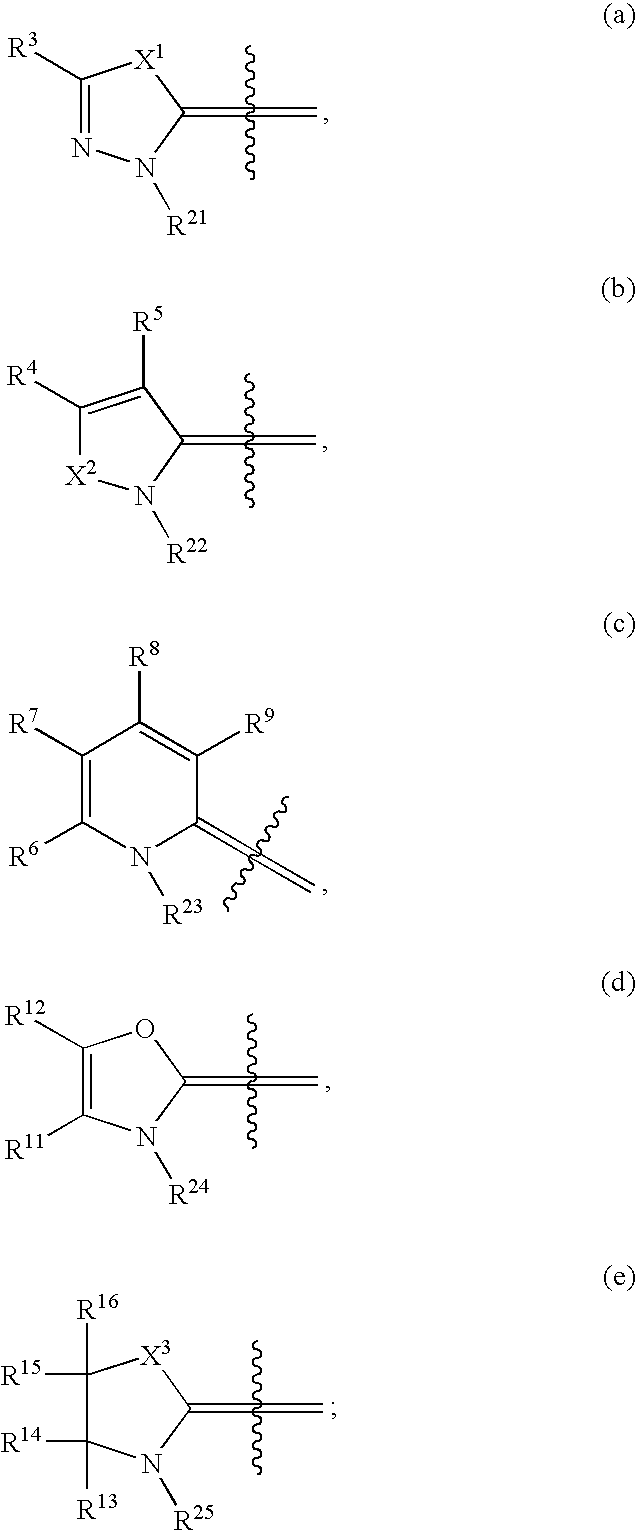Novel compounds as cannabinoid receptor ligands
a cannabinoid receptor and compound technology, applied in the field of compounds, can solve the problems of limited development and clinical utility of nonselective cb agonists, site becomes a source of ongoing pain and tenderness, and no currently available therapies or drugs effectively treat all types of nociceptive and neuropathic pain states
- Summary
- Abstract
- Description
- Claims
- Application Information
AI Technical Summary
Problems solved by technology
Method used
Image
Examples
example 1
N-{(3E)-5-tert-butyl-1-methyl-2-[(2R)-tetrahydrofuran-2-ylmethyl]-1,2-dihydro-3H-pyrazol-3-ylidene}-2-[(2R)-tetrahydrofuran-2-ylmethoxy]-5-(trifluoromethyl)benzamide
example 1a
(R)-di-tert-butyl 1-((tetrahydrofuran-2-yl)methyl)hydrazine-1,2-dicarboxylate
[0322]To a mixture of (R)-(tetrahydrofuran-2-yl)methanol (Fluka, 4.0 g, 39.2 mmol) and di-tert-butyl hydrazine-1,2-dicarboxylate (9.1 g, 39.2 mmol) in THF (50 mL) was added triphenylphosphine (14.4 g, 54.8 mmol) followed by (E)-di-tert-butyl diazene-1,2-dicarboxylate (12.6 g, 54.8 mmol), portionwise. This mixture was stirred at ambient temperature for 16 h then was concentrated under reduced pressure and purified by column chromatography (SiO2, 99% hexane / EtOAc to 25% hexane / EtOAc) to give the title compound (11.8 g, 37.3 mmol, 95% yield). MS (DCI / NH3) m / z 317 (M+H)+.
example 1b
(R)-((tetrahydrofuran-2-yl)methyl)hydrazine dihydrochloride
[0323]A mixture of the product of Example 1A (11.8 g, 37.3 mmol) and HCl (4 M in dioxane, 46.6 mL, 186 mmol) was stirred at ambient temperature for 16 h. The solids were isolated via filtration and were washed with Et2O. The resulting title compound (6.4 g, 33.8 mmol, 91% yield) was carried on without further purification. MS (DCI / NH3) m / z 117 (M+H)+.
PUM
| Property | Measurement | Unit |
|---|---|---|
| Fraction | aaaaa | aaaaa |
| Fraction | aaaaa | aaaaa |
Abstract
Description
Claims
Application Information
 Login to View More
Login to View More - R&D
- Intellectual Property
- Life Sciences
- Materials
- Tech Scout
- Unparalleled Data Quality
- Higher Quality Content
- 60% Fewer Hallucinations
Browse by: Latest US Patents, China's latest patents, Technical Efficacy Thesaurus, Application Domain, Technology Topic, Popular Technical Reports.
© 2025 PatSnap. All rights reserved.Legal|Privacy policy|Modern Slavery Act Transparency Statement|Sitemap|About US| Contact US: help@patsnap.com



